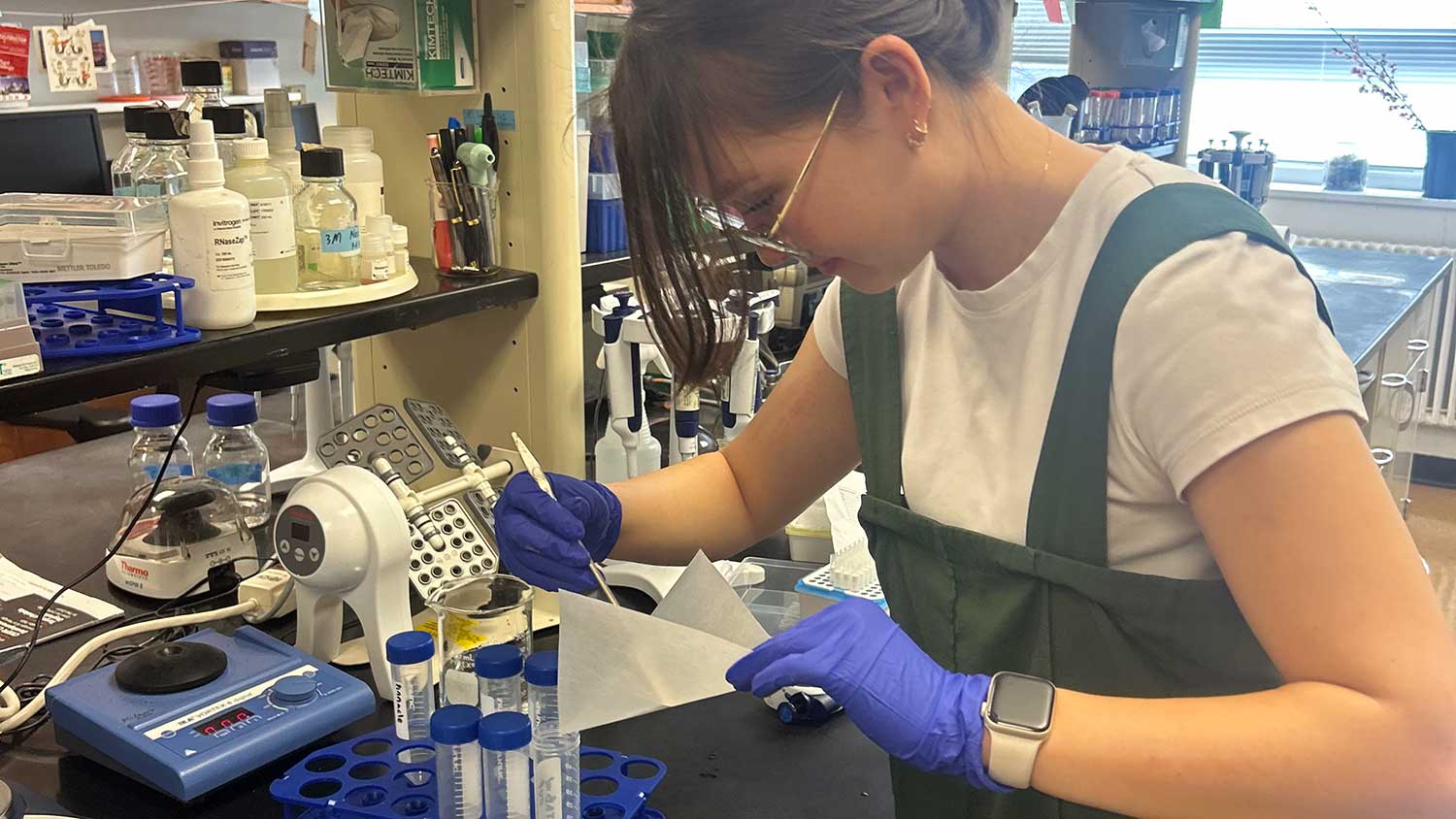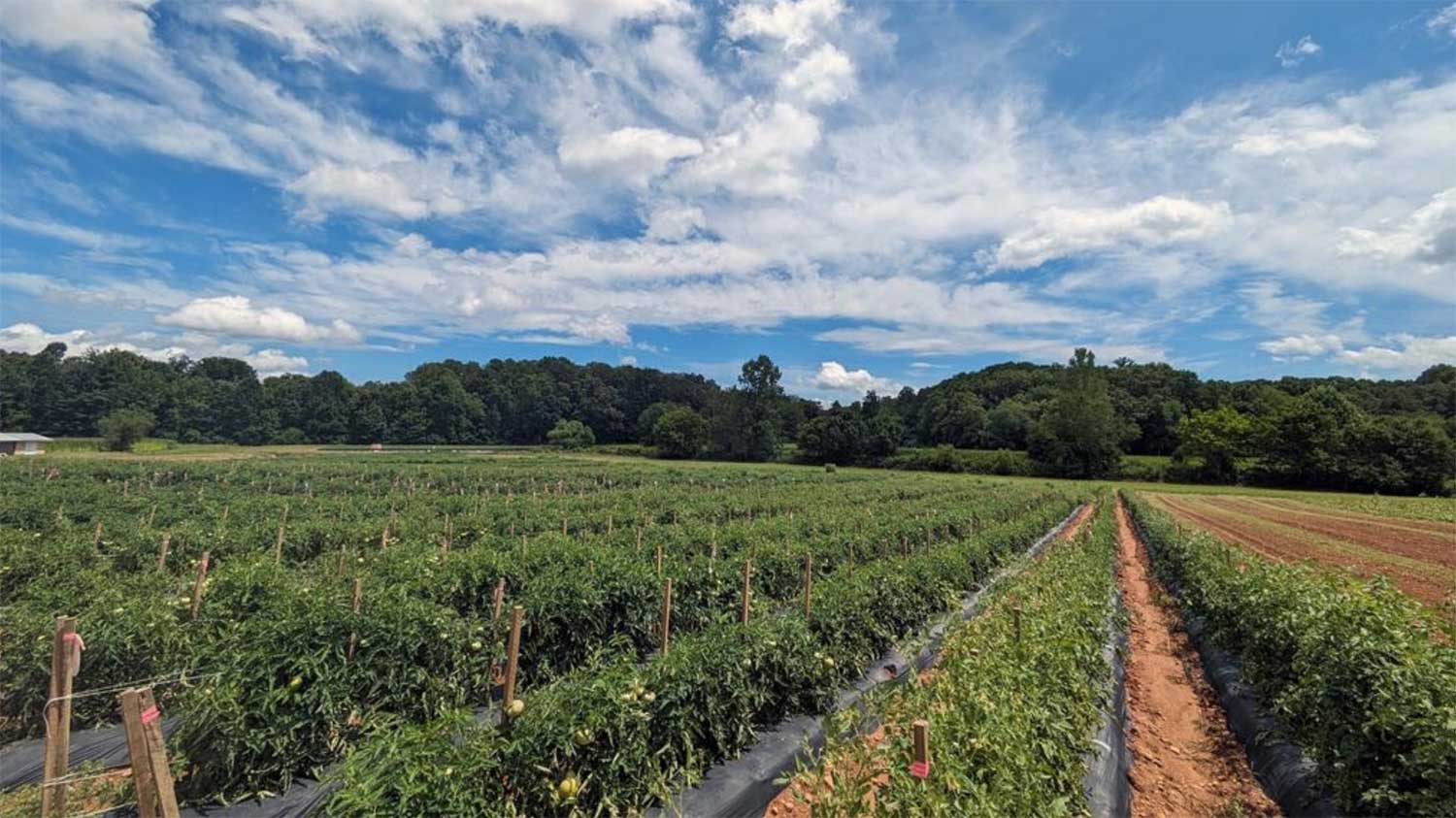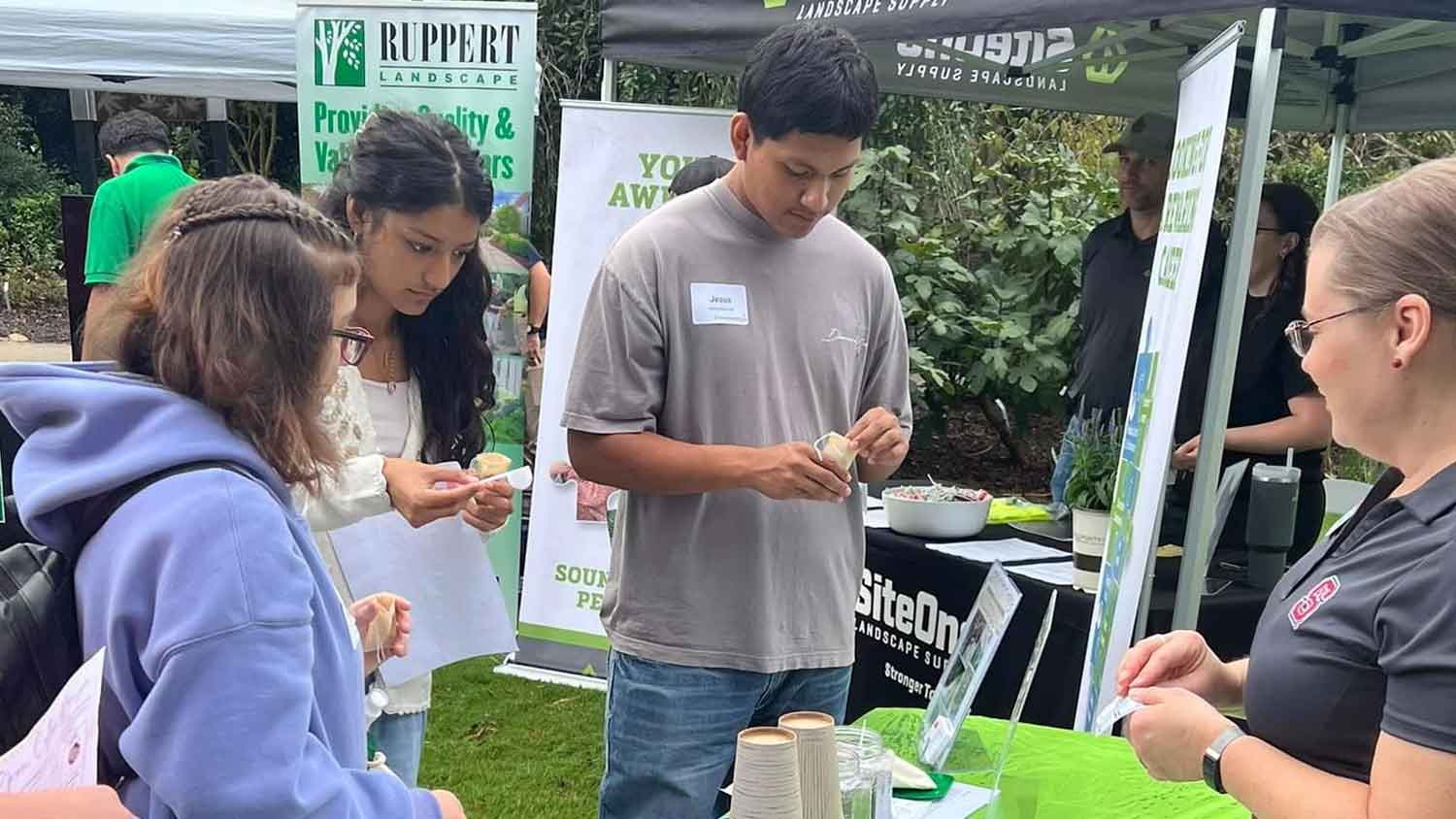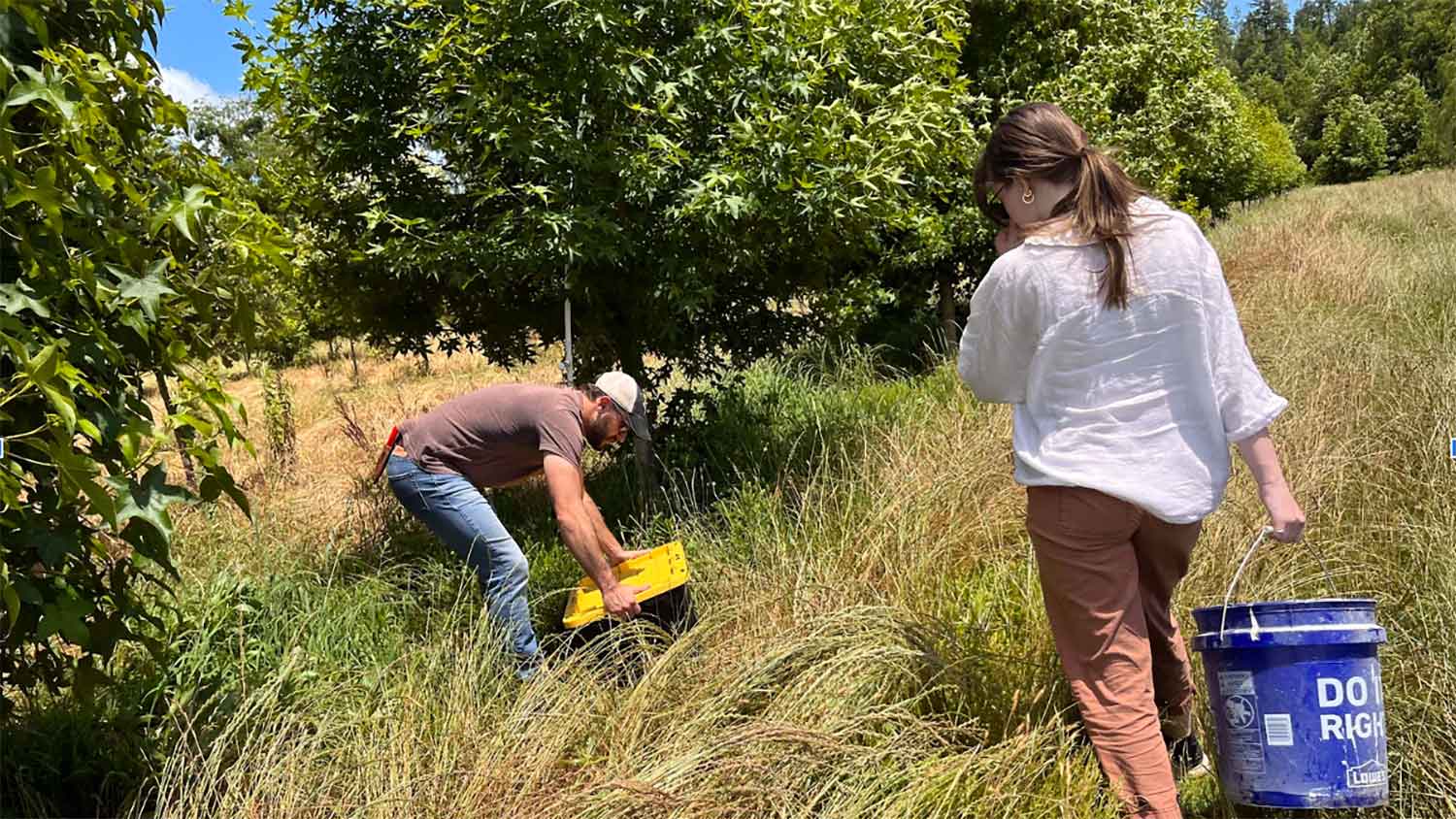Growing up In the middle of the Pacific Ocean, on the shores of Oahu, Hawai’i, Ellen White was surrounded by Honolulu’s bountiful greenery. This immersion into nature left her with an indelible connection to plants. During the COVID-19 pandemic, White retreated to her garden where she spent most of her days.
Then White’s grandfather encouraged her to apply to the College of Engineering at NC State University. Impressed by the university’s connections and graduate student job placement, White applied for an engineering program, but something was missing.
After attending a few horticulture classes, including one where Durham-based tech company Pairwise presented their gene editing innovations in food and agriculture, working with plants seemed to be a natural selection for White. Serving as inspiration, she chose to concentrate her studies on plant breeding and biotechnology as a horticulture science major. Most recently, White competed in a research competition against undergraduate, graduate and postdoctoral students where she won the Genetics and Genomics Academy poster contest. Her poster was titled “Genomic Selection of Challenging-to-Culture Blueberry Varieties.”
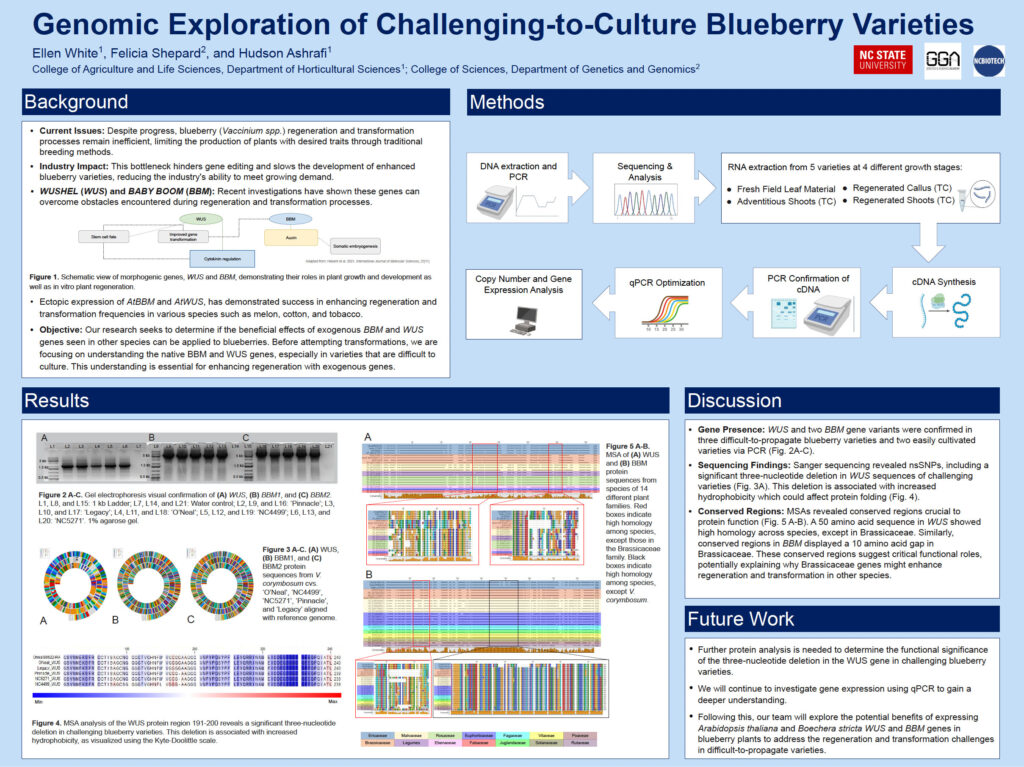
“For the past year, I worked in the Department of Horticultural Science as an undergraduate researcher in Associate Professor Hudson Ashrafi’s Blueberry Genetics and Genomics Lab, focusing on two primary projects,” says White. “The first project involves enhancing the in vitro propagation of blueberry varieties. Developing an advanced crop variety with improved traits typically takes 10 to 15 years. However, if these varieties cannot be easily propagated in vitro, they hold little value for release, as 95% of blueberries sold by nurseries are produced through tissue culture rather than rooted cuttings. Many blueberries known for their excellent taste, size, and texture are difficult to tissue culture, while those amenable to tissue culture often face inconsistent success due to factors such as genotype, explant type, and various abiotic conditions like culture medium, plant hormones, growth regulators and temperature. The Blueberry Genetics and Genomics Lab research aims to understand the genes associated with these tissue culture processes.
“We have identified two key genes, WUSCHEL and BABY BOOM, which are crucial for initiating shoot regeneration from callus tissues and serve as early markers for shoot development during tissue culture,” White continues.”My role involves investigating these genes’ structure and expression through designing primers, performing PCR (Polymerase Chain Reaction), sequencing, and analyzing the results.”
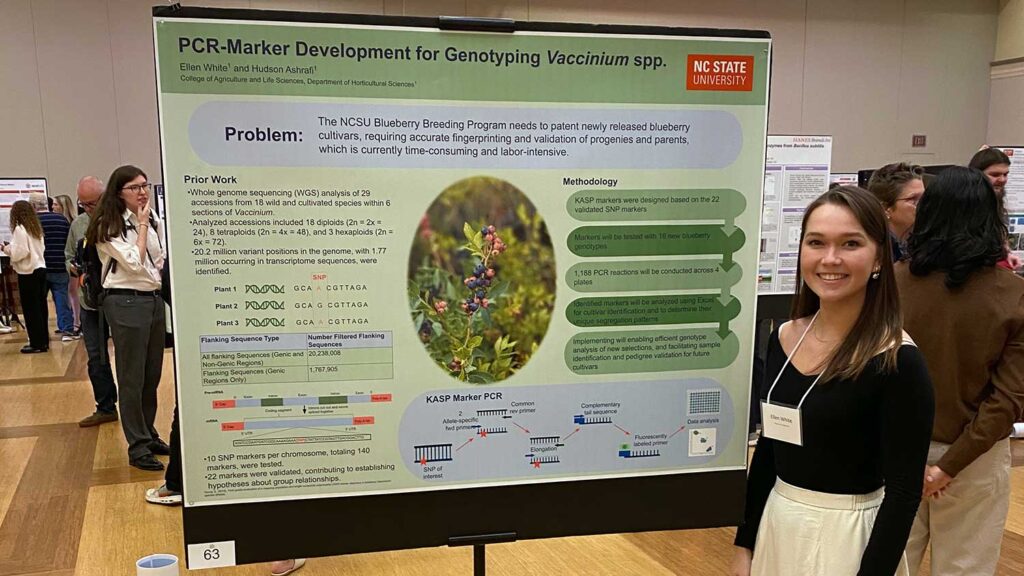
In the second project, White is developing a standardized protocol for genotyping blueberries in the lab. The NC State Blueberry Breeding Program focuses on creating new blueberry cultivars through traditional breeding. To protect and patent these new cultivars, single nucleotide polymorphic (SNP) markers are used for distinct identification and are both efficient and cost-effective. These markers are essential for validating progenies from crosses and enforcing patents. White’s task is to establish a standardized genotyping protocol using Kompetitive allele-specific PCR (KASP). This approach aims to streamline the current labor-intensive and time-consuming process, enhancing the program’s ability to accurately identify and patent newly released cultivars by developing a genotyping library.
“This summer, Ph.D. candidate Felicia Shepard and I were awarded the 2024 Summer Genetics and Genomics Academy Mini-Grant, which supports our research on genes involved in blueberry transformation and regeneration,” says White. The grant enabled the lab to generate transcriptome data for five blueberry varieties and perform sequencing analysis. Additionally, White received the Fall 2024 Undergraduate Research Supply Grant, which will be used to further research into analyzing gene expression levels and copy numbers.
“My time in the Blueberry Genomics and Genetics Lab has provided valuable insights into the research process,” explains White. “Although molecular biology seemed intimidating at first, I quickly found it incredibly enjoyable and intriguing with experience. The lab environment is rich with opportunities for creativity and innovation. Even when experiments don’t go as planned, troubleshooting and optimizing results turn challenges into rewarding learning experiences. I learned that there is a great sense of satisfaction in troubleshooting and refining results.”
As White enters her senior year, she is preparing to apply to PhD programs in genetics with a focus on gene editing. The skills and experience gained in the lab have provided a strong foundation in research and laboratory techniques, which will be invaluable in her future studies and career. White is excited about what lies ahead and deeply grateful for the opportunities.
Want more horticulture research?
Emerging research in the Department of Horticultural Science impacts growers, industry, and students through cutting-edge research programs. Follow how our discoveries affect agriculture and the environment by joining our monthly newsletter.
For a hands-on academic path that provides real-world benefits and applications explore our undergraduate and graduate programs to learn from expert faculty and have career-focused experiences.
Training future ag leaders is part of how we are advancing plants.
